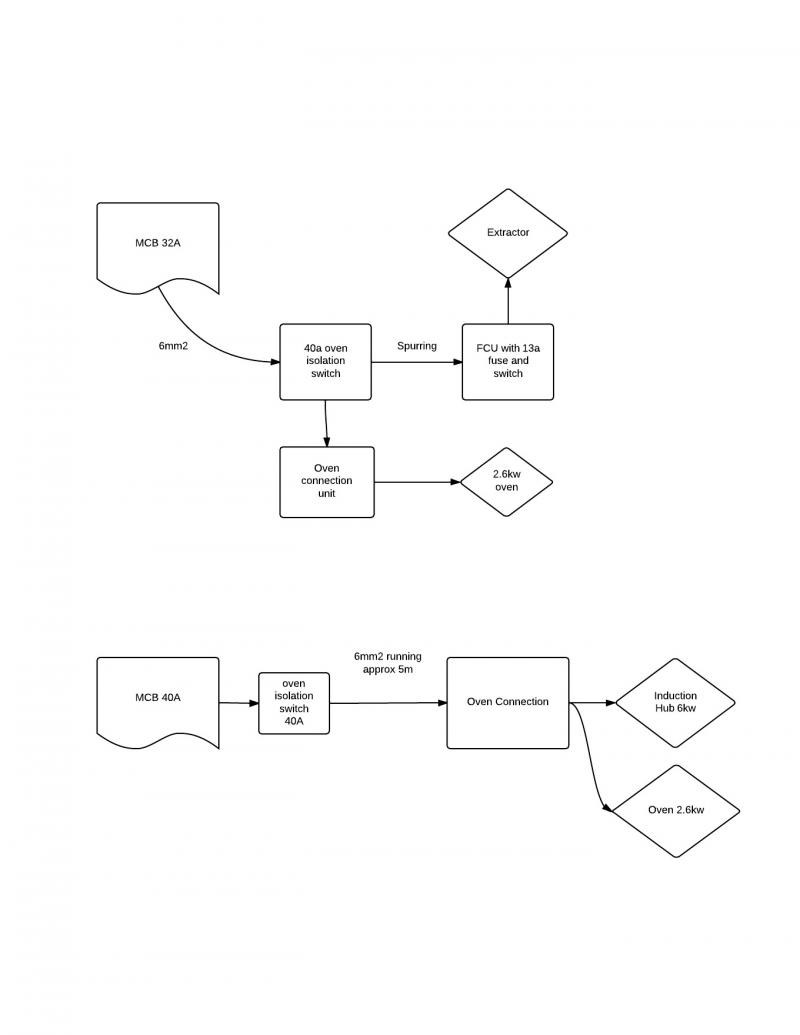- Joined
- 9 May 2014
- Messages
- 8
- Reaction score
- 0
- Country

Ah, that's a bit different from what we thought, and it casts some doubt on whether the electrician was being sensible. You now have 2 ovens, with a total potential load of about 19.2A running off the one 13A fuse in the FCU (the 'fuse and switch' you mention). Theoretically, that is just about OK, since if one applies 'diversity', one is allowed to consider a total cooking appliance load of 19.2A as representing only 12.76A (i.e. fractionally below 13A). However, particularly given that there will be a 13A fuse in the plug for each oven, that additional ('common') 13A fuse it totally unnecessary, and could possible result in problems (occasionally 'blowing'). If you're sticking with the plugs/sockets, the sensible thing would probably be to change that FCU to an (unfused) (probably 40A) switch or, if a switch is not required (i.e. if both socket switches were accessible), just an appropriate junction box.Turns out what I thought was a isolation switch is intact a fcu with a 13 amp fuse and switch. What he has done is taken the cable from the fcu that went to the old oven and attached a dual socket to it.
Kind Regards, John
Thanks John. Yes I thought it was strange to have so many fuses. Would this work - connect the oven and hob to the circuit intended for just the hob as this has a isolation switch already at 40a and then convert the socket to a oven connection for just the one, that way the existing fcu with the 13amp will just have one oven wired.

